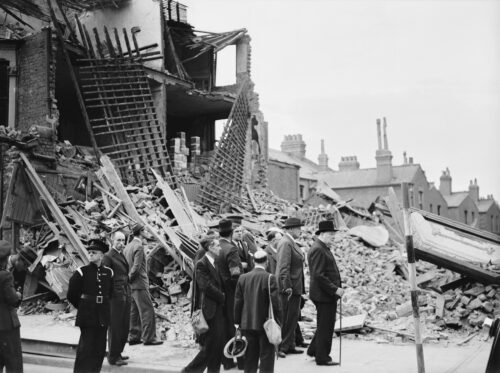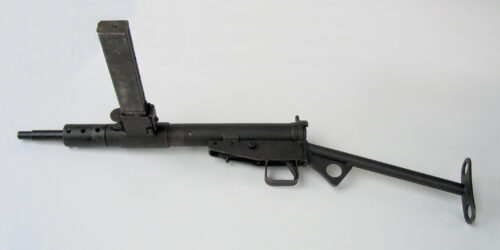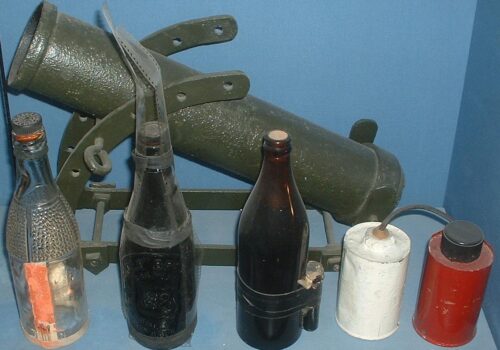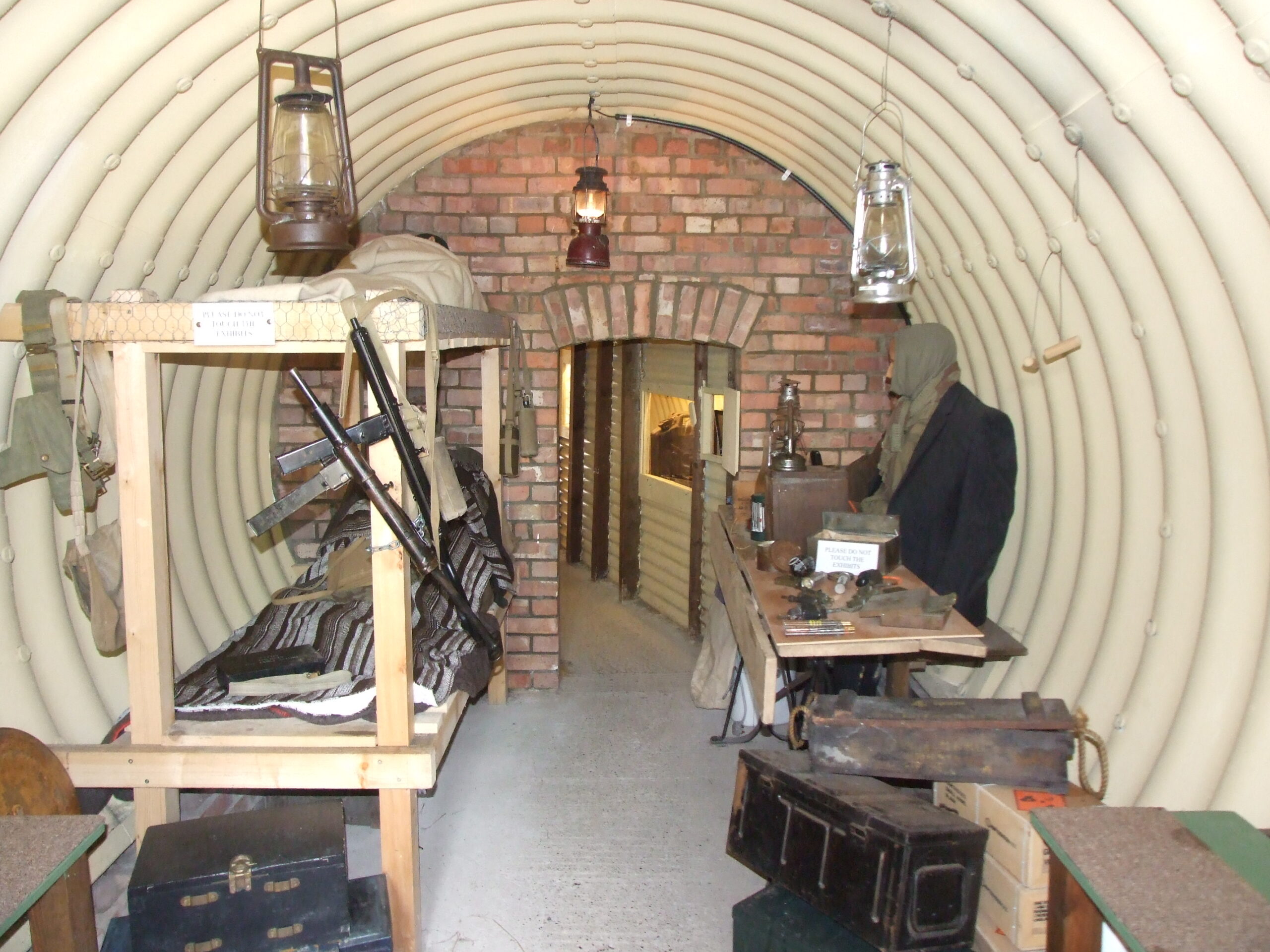Auxiliary Unit Operational Base reconstruction at Parham Airfield Museum, Suffolk. Photo: Galius Comelius. CC BY-SA 4.0.
If you will not fight for right when you can easily win without bloodshed; if you will not fight when your victory will be sure and not too costly; you may come to the moment when you will have to fight with all odds against you and only a precarious chance of survival. There may be even a worse fate, you may have to fight when there is no hope of victory, because it is better to perish than to live as slaves.” — Winston Chruchill.
The British Auxiliary Units or GHQ Auxiliary Units, also known as Aux Units, were a secret network of resistance fighters who were trained and equipped to sabotage and harass the enemy in case of a Nazi invasion of Britain during the Second World War. They were formed by Winston Churchill in 1940 and operated under the cover of the Home Guard, but they had a different mission and strategy. The Auxiliary Units were attached to the Home Guard, but operated independently and had no military status or uniforms. The members were expected to have a very short life span if activated.

The question of whether Britain thought a Nazi invasion of its homeland was imminent in 1940 is not easy to answer. On one hand, Britain did not surrender after the fall of France and prepared for a possible invasion by building fortifications, mobilizing the Home Guard and resisting the Luftwaffe attacks in the Battle of Britain. On the other hand, Britain may have realized that Germany did not have a realistic plan for an invasion and that Hitler was bluffing to force a compromise.
Operation Sea Lion was the codename for the planned German invasion of Britain in 1940. It was never carried out, as Germany failed to gain air superiority over Britain and faced many logistical and naval challenges. Some historians doubt that Hitler ever seriously intended to invade Britain and that Operation Sea Lion was a political bluff to force Britain to negotiate. Britain, however, prepared for the possibility of an invasion by building defenses and mobilizing the Home Guard.
The Home Guard was an armed citizen militia that supported the British Army during the war. It was composed of volunteers who were otherwise ineligible for military service, such as those who were too young, too old or in reserved occupations. The Home Guard’s main role was to act as a secondary defense force in case of invasion, by guarding coastal areas, key sites and vulnerable points, as well as assisting in anti-aircraft and civil defense duties. The Home Guard was active from 1940 to 1944 and had 1.5 million members at its peak.

The Auxiliary Units were not meant to fight in conventional battles, but to go underground and launch guerrilla attacks on German supply lines, communication systems, transport vehicles, fuel depots, airfields and officers. They had hidden underground bases, called Operational Bases (OBs), where they stored weapons, explosives, food and other supplies. They also had Observation Posts (OPs) where they could observe enemy movements and report back to their commanders.
The Auxiliary Units were composed of volunteers from various backgrounds, such as farmers, landowners, gamekeepers, poachers and even policemen. They had to pass rigorous physical and mental tests and undergo intensive training in Coleshill House near Highworth, Wiltshire. The training of the British Auxiliary Units in WW2 was a highly secret and intensive process that aimed to prepare a network of civilian volunteers for guerrilla warfare in case of a Nazi invasion.
Coleshill House, a country estate in Oxfordshire, that was requisitioned as the top-secret headquarters of the British Resistance Organisation. Coleshill House was a grand country mansion dating back to 1652, designed by Inigo Jones and built by Sir Roger Pratt. It had 48 rooms, two high walls and underground tunnels that brought water to the house. It was chosen for its secluded location, shielded from the main road and near the Buscot Estate, owned by Lord Radnor, who supported the resistance movement.
At Coleshill House, they learned how to use weapons, explosives, sabotage techniques, camouflage, signaling and assassination methods. They also received instruction manuals disguised as ordinary items, such as calendars or fertilizer booklets, that contained detailed information on how to make bombs, booby traps and other devices out of household materials. The training was rigorous and dangerous, as the Auxiliary Units were expected to fight behind enemy lines and inflict maximum damage on the invaders, with little chance of survival or escape.

The Auxiliary Units were trained by experts from various branches of the military and intelligence services, such as Section D of the Secret Intelligence Service (SIS/MI6), which specialized in sabotage and resistance operations. The Auxiliary Units also had links with other special forces units, such as the Special Air Service (SAS) and the Special Operations Executive (SOE). The SAS and SOE needed men trained and willing to fight behind enemy lines and some members of the Auxiliary Units were recruited by these units.
The number of people involved in the Auxiliary Units is not precisely known. One estimate puts the number at about 3,500 men in the Operational Patrols, which consisted of four to eight men each, and about 1,000 women in the Special Duties Branch, which handled intelligence and communication. Another estimate puts the total number of Auxiliary Unit members at around 6,000. They may have been few in number, but they were elite.
The Auxiliary Units were disbanded in 1944, after the threat of invasion had receded. Their existence remained largely unknown to the public until the 1960s, when some of their members began to reveal their stories. Today, their courage and sacrifice are recognized by historians and those who seek to preserve their legacy and honor their memory.
*The views and opinions expressed on this website are solely those of the original authors and contributors. These views and opinions do not necessarily represent those of Spotter Up Magazine, the administrative staff, and/or any/all contributors to this site.
